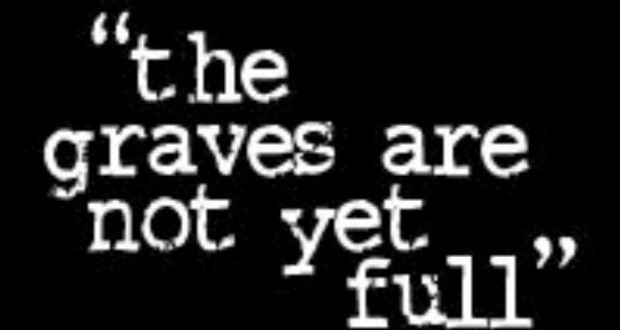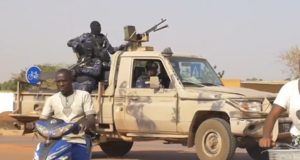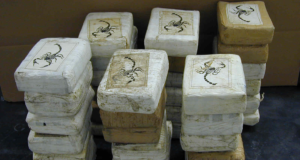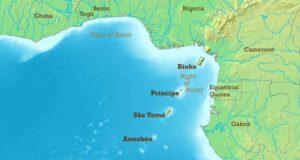By Matthew Lower and Thomas Hauschildt.
9th May 2014, Human Rights and Conflict Resolution, Issue 2, No. 1.
This year marks the 20th anniversary of the beginning of the Rwandan genocide. From April to July 1994, over 800,000 Tutsis and moderate Hutus were killed. In addition, 250,000 women became victims of sexual violence, many of whom were killed afterwards.[i] An estimated 70 percent of the women who survived were infected with HIV. At the end of the 100 days of slaughter, 85 percent of Tutsis – equal to 10 percent of Rwanda’s population – were killed and half of the population was either internally displaced or had fled the country.
The Rwandan genocide serves as a stark reminder how little the international community has learnt from the horrors of the Holocaust; in view of not only the vast crimes committed, but the abject inaction to prevent a genocide which had “one of the highest casualty rates of any population in history from non-natural causes.”[ii]
A plethora of factors were responsible for the genocide. Some of these can be dated back to over a century ago, when colonial powers entrenched a division between Hutus and Tutsis, a division further exacerbated in the decades that were to follow. Though the genocide was planned by the ‘Hutu Power’ Government and executed by the military and armed militia groups, a large number of civilians were actively involved in the atrocities. Neighbours turned against neighbours, friends against friends and even relatives against relatives. Most of the victims were killed with elementary weapons such as machetes, clubs and axes and it is estimated that 130,000 people took actively part in the killings.[iii]
The obvious question, then, is how such a high number of seemingly ordinary people could become ruthless murderers and commit crimes which shock the human conscience?
Constructing a Rhetoric of “Us” versus “Them”
Rwanda was colonized by Germany in 1897 before Belgium took over control in 1916. In colonial administration, Europeans generally considered Tutsis as a superior group, and thus collaborated with the Tutsi monarchy to rule Rwanda. Where being Tutsi was commonly equated with a life of superiority and domination, being a Hutu was associated with a life of inferiority and subordination. Tutsis were predominantly herdsmen, whilst the majority of Hutus were farmers. Although being often described as ‘ethnic’ groups, Hutus and Tutsis differed in occupation rather than in terms of ethnic attributes.
Indeed, Tutsis and Hutus are often described as belonging to the same ethnic groups as they share language, culture and region. Moreover, intermarriage was not uncommon and social mobility between Hutus and Tutsis was possible. Hutus acquiring larger amounts of cattle could become Tutsis, whereas Tutsis with a decreasing number of cattle could become Hutus.
Despite these assertions, the conflict is commonly portrayed as an ethnic conflict, where group identities were artificially entrenched by colonial powers. The identities of Hutus and Tutsis were further constructed and reinforced by Belgian colonialists when they introduced identity cards in 1933, assigning the ethnicity of Hutu, Tutsi or Twa to each Rwandan. A formerly ranked, but flexible system (which offered some level of social mobility), became a rigid system divided by largely-artificial ethnic delineation. Of crucial importance, following Rwanda’s independence in 1962, the Hutu government maintained the colonial policy of identity cards, espoused anti-Tutsi propaganda and continued the keeping of ethnic quotas. This historical context is highly relevant, as much of the propaganda surrounding the genocide drew upon the distinctions and policies implemented during colonial rule.
The perception of “us” versus “them” was transmitted through generations and became institutionalised. Solutions suggested by one group to resolve mounting tension were considered by the other side as a way for “them” to gain more power over “us”. In the decades to follow, these perspectives, strongly influenced by the colonial period, became reinforced and deeply entrenched in the fabric of Rwandan society. The seed for protracted social conflict, leading to the eventual genocide, was sown and the Rwandan media was well aware of how to use it to its advantage.
Exploiting Division With Hate Speech Propaganda
Generally, group formation, per se, is not the source of conflict, but conflict is likely to arise if distinct groups are extremely exclusive and group members perceive their security to be under threat. This was to become evident in Rwanda by the early 1990s.
In the years following independence, thousands of Tutsis fled from violence directed against them. By the late 1980s, Tutsis living in exile in Uganda formed the Rwandan Patriotic Front (RPF). Its military arm, the Rwandan Patriotic Army (RPA), invaded northern Rwanda in late 1990 and a four year insurgency campaign followed.
The advance of the RPA led to extensive propaganda campaigns of the Rwandan media, exaggerating perceived differences between Tutsi and Hutu. The media draw attention to the colonial period and spread fears that Hutus could once more be the victim of suppression if Tutsis were to take over control in Rwanda. These assertions were supported by coordinated public acts intended to increase the levels of fear among the public, such as a staged attack on Kigali by ‘Tutsis’ in October 1990.
Robert Guest[iv] argues that propaganda was “swallowed” by Hutu peasants, who began to identify as Hutu and not Rwandan. This contributed to a post-colonial precedent of anti-Tutsi propaganda, which was already a feature in massacres in 1959, 1962 and 1972. The 1990 invasion of Rwanda by the RPF escalated this trend, and was perceived to have ‘legitimised’ anti-Tutsi propaganda that targeted both the RPF and domestic Tutsis. Both RTLM and Kangura argued anyone who opposed the Hutu Power movement was a Tutsi ‘accomplice’ and RPF ally.[v]
Comparisons can be drawn with theories on war propaganda, particularly the common emphasis on the ‘traitor within’[vi]. War propaganda is often labelled as ‘news’, manipulated to further separate agendas[vii]. This was certainly true in Rwanda, where government propaganda claimed the invading RPF intended to massacre the Hutu population. A prominent example of this manipulation was a widely distributed 1992 military document, which identified ‘the enemy’ as Tutsis inside and outside the country.[viii] Utilising the resultant fears to raise ethnic tensions, extremist Hutu officials commonly encouraged retaliatory massacres against Tutsis following RPF attacks.
Following the RPF invasion, media outlets such as the newspaper ‘Kangura’, ‘Radio Rwanda‘ and in 1993 ‘Radio Mille Collines‘ (RTLM), became tools of mass propaganda. These media sources portrayed extreme ethnic distinctions, defining Tutsis as ‘the enemy’ and Kangura published the infamous Hutu ‘Ten Commandments’, a widely circulated, militant ‘Hutu Power’ doctrine. Sometimes popular music was mixed with incitement to murder. Propaganda fuelled hysterical fear of Tutsis and blurred the line between the RPF and domestic Tutsis. Consequently, Tutsis in general were identified as an ‘invading force’ and in emphasising the ‘alienness’, cleverness and deceitfulness of Tutsis, propaganda established them as a ‘permanent threat’.[ix] A lack of alternative media sources in Rwanda contributed to the attention these outlets received.
What made propaganda particularly effective was the simultaneous dehumanisation of Tutsi and the legitimisation of their extermination. The ‘Ten Commandments’ had revived historically divisive ethnic myths, whilst Kangura and RTLM referred to Tutsis as Inyenzi (cockroaches), creating a dehumanising discourse. The emphasis on ‘inherent’ differences was crucial in presenting the ‘risk’ posed by Tutsis. Similarities have been drawn between anti-Tutsi propaganda and the Nazi’s portrayal of Jews, as well as propaganda in the former Yugoslavia, where the media also successfully fostered deep ethnic divisions.
In 1993 the RPF and the then-Rwandan Government under Habyarimana signed a peace agreement – the Arusha Accords – leading to a power-sharing agreement. The agreement was overseen by the United Nations Mission Assistance (UNAMIR). However, amongst (and contributing to) other factors, propaganda played a significant role in undermining the Arusha Accords, sustaining the conflict and rationale of the extremist propaganda. Furthermore, media targeted the United Nations presence and moderate Hutus were labelled as traitorous divisionists, publicly targeting individuals such as the Prime Minister.
Such societal cleavages were a clear contributor to the 1994 atrocities, whereby Hutu extremists had successfully ‘fostered the radicalization of prejudice.’[x]
Turning Hatred into Genocide
Whilst these examples of propaganda, and their influence on 1994 Rwanda, were delivered by various sources, the simultaneous development of the Interahamwe militia, arms caches and extremist propaganda demonstrate evidence of central coordination. In a broadcast on 3rd April 1994, RTLM alluded to knowledge of the impending atrocities.[xi] Prior to the genocide, propaganda was clearly utilised to create conditions would facilitate subsequent mass killings of Tutsis.
On the 6th April 1994, Habyarimana’s plane was shot down. The genocide started a few hours later. The ‘Hutu Power’ media played an immediate and pivotal role in spurring on the genocide as it occurred. RTLM in particular became an active organiser of the genocide, immediately blaming the RPF following President Habyarimana’s assassination and organising violence against Tutsis and moderate Hutus.
RTLM subsequently took on a role described my McNulty[xii] as the ‘facilitator of genocide’. From the beginning it broadcast the names of ‘targets’ and reported the locations of victims hiding from the militias, as did Radio Rwanda. Propaganda created a sense of ‘urgency’, compelling Hutus to act quickly in response to the perceived ‘danger’. As a result of radio propaganda’s role, Samantha Power stated that “Killers often carried a machete in one hand and a transistor radio in the other.”[xiii]
RTLM broadcast fearmongering misinformation regarding the RPF throughout the genocide, to maintain the climate of fear. RTLM attempted to justify killings, framing them as Hutu self-defence, stating ‘the cruelty of the Inyenzi can only be cured by their total extermination.’[xiv] An influential analysis of the Genocide by Article 19, argued that RTLM had become a clear tool in the genocide’s execution.[xv] Above all, Jones identified that propaganda was a vital cornerstone in biding the Hutu majority “in genocidal complicity”.[xvi]
Clear parallels between RTLM’s disinformation during the genocide with other propaganda campaigns are evident, Hintjens[xvii] refers in one instance to an almost exact replica of a story used by WW2 partisans in Poland. The RTLM’s calls for the final extermination of Tutsis indeed bears clear resemblance to the ‘final solution’ advocated by Nazi propaganda minister Goebbels. In the proceedings of the subsequent International Criminal Tribunal for Rwanda (ICTR), the prosecution argued “What RTLM did was to spread petrol through the country little by little, so that one day it would be to set fire to the whole country.”[xviii]
The use of propaganda leaflets and radio messages was a key tool in procuring the compliance of Hutus to participate in the massacres, including those initially against the killings. Propaganda alluded to the rewards participants would receive for killing Tutsis. These messages reinforced impunity and provided the killers with the legitimacy to kill Tutsis and the moderate Hutus who often tried to protect them. Those Hutus who fled Rwanda after the genocide were often pushed into doing so by fear filled propaganda, which was arguably aimed at increasing the number of refugees, who would then be seen as victims by the international community.
Strikingly, whilst Burundi’s Hutu President was also killed, the Burundi media worked with the UN and domestic officials to broadcast a message of calm, averting atrocities on this occasion. This emphasises propaganda’s influence in spurring on the Rwandan genocide.
The effects of the propaganda also transcended from the national to the international sphere, as Hutu propaganda arguably misled the international community’s perceptions of the genocide. Propaganda alluded to atrocities committed by the RPF which in turn contributed to notions that atrocities were the result of renewed warfare, ethnic tensions or simply ‘chaos’. Indeed, French media portrayed the events as a “two way genocide” and French troops were led to believe Hutus were victims of the conflict.[xix]
Nonetheless, international actors became fully aware of the true role Hutu-Power propaganda was playing and the Force Commander of UNAMIR, General Roméo Dallaire, head of the UN peacekeeping force in Rwanda, requested the use of jamming equipment.[xx] Former state department official, and now United States Ambassador to the United Nations, Samantha Power, has vocally argued since the genocide that the US in particular could and should have done so, asserting that in ending the “crucial, deadly radio broadcasts” with jamming equipment, it may have at least slowed the genocide and potentially saved thousands of lives.[xxi] In a blunt addressal of the jamming debate, the BBC stated:
‘Simply jamming [the] broadcasts and replacing them with messages of peace and reconciliation would have had a significant impact on the course of events.”[xxii]
In demonstrating the now-consensus on propagandas role in the genocide, RTML’s most vocal leaders during the genocide, Jean-Bosco Barayagwiza, Ferdinand Nahimana and Hasson Ngeze, were indicted, arrested and tried by the ICTR. Barayagwiza and Ngeze received a sentence of 35 years, Nahimana received 30 years. The ICTR concluded that the defendants were:
“Guilty of conspiracy to commit genocide, genocide, direct and public incitement to commit genocide and persecution and. exterminations as crimes against humanity”’[xxiii]
Conclusion
It is evident then, that the media was used to mobilize Hutu against Tutsi in an organised, coordinated campaign by Hutu-Power extremists. Tension between the two groups existed for decades, but what was a protracted social conflict morphed quickly into a genocide with significant assistance from the media.
Propaganda played an active, supportive role in facilitating the atrocities, as well as an influential role in establishing the pre-conditions for mass-killings. The lessons for the international society are twofold. Whilst a free press is sine qua none to hold those in power accountable and represents the very foundation free societies rest upon, it needs to be emphasised that freedom comes with responsibility. The abuse of the freedom of speech to create division through hate speech that in turn leads to large scale violence is an indicator of an arising conflict. Such hate speech needs to identified and acted upon. Increased pressure by the international society is required to halt such speeches and resources need to pour in to solve tensions between groups.
Furthermore, the Rwandan genocide demonstrated that where propaganda and hate speech is so influential, lives can be saved if media outlets inciting violence are neutralised. Roméo Dallaire requested the jamming of radio frequencies, an action which would not only have been simple to achieve, but also effective in potentially reducing the number of casualties. Should future conflicts demonstrate similarly divisive and fearmongering disinformation, efforts should be made to both provide alternative sources of information and to block dangerous propaganda sources. The commemoration of the 20th anniversary of the Rwandan genocide should be a stark reminder that the consequences of hate speech should not be underestimated.
[i] Amnesty International. (2004). Rwanda: “Marked for Death”, Rape survivors living with HIV/AIDS in Rwanda. Amnesty International. P. 3
[ii] Hintjens, H. (1999). ‘Explaining the 1994 Genocide in Rwanda’, The Journal of Modern African Studies, Vol. 37, No. 2, pp. 241-286. P. 241-2
[iii]
Burnet, J. (2008). The Injustice of Local Justice: Truth, Reconciliation, and Revenge in Rwanda. Genocide Studies and Prevention. Vol. 3, No. 2, pp. 173-193. P. 175
[iv] Guest, R. (2004). The Shackled Continent, Smithsonian Books: Washington. P. 114
[v] Stanton, G. (2009). The Rwandan Genocide: Why Early Warning Failed. Journal of African Conflicts and Peace Studies. Vol.1, Np. 2, pp. 6-25. P.10
[vi] Jones, A. (2011). Genocide: A Comprehensive Introduction (2nd Ed.), Routledge: Abingdon. P. 83
[vii] Woolf, L. & Hulsizer, M. (2005). ‘Psychosocial roots of genocide: risk, prevention, and intervention’, Journal of Genocide Research, Vol. 7, No. 1, pp. 101–128. P. 110
[viii] Desforges, A. (1999). ‘Leave None to Tell the Story: Genocide in Rwanda’, Human Rights Watch Publication. P.50
[ix] Lemarchand, R. (2009). The 1994 Rwandan Genocide. In: Totten, S. & Parsons, W. (2009). Century of Genocide (3rd Edition), Routledge: Abingdon. Ch. 15. P. 407
[x] Uvin, P. (1999). ‘Ethnicity and Power in Burundi and Rwanda: Different Paths to Mass Violence’, Comparative Politics, Vol. 31, No. 3, pp. 253-271. P. 260
[xi] Article 19. (1996). ‘Broadcasting Genocide – Censorship, Propaganda and State-Sponsored Violence in Rwanda 1990-1994’, Article 19 Publication. P. 59
[xii] McNulty, M. (1999). Media Ethnicization and the International Response to War and Genocide in Rwanda. In: Allen, T. & Seaton, J. (1999). The media of conflict: war reporting and representations of ethnic violence, London: Zed Books. Ch. 13 P. 274
[xiii] Power, S. (2001). Bystanders to Genocide, The Atlantic. Available at: http://www.theatlantic.com/magazine/archive/2001/09/bystanders-to-genocide/4571/
[xiv] Article 19, 1996: 68
[xv] Article 19, 1996: 69
[xvi] Jones, 2011; 351
[xvii] Hintjens, 1999: 266
[xviii] Prosecutor v. Nahimana, Case No. ICTR 99-52-T, Judgment and Sentence, para 436 (Dec. 3, 2003), http://www.unictr.org/Portals/0/Case/English/Ngeze/judgement/Judg&sent.pdf
[xix] Gourevitch, P. (1998). We wish to inform you that tomorrow we will be killed with our families, Picador: New York. P. 160
[xx] Metzl, J. (1997). ‘Rwandan Genocide and the International Law of Radio Jamming’, The American Journal of International Law, Vol. 91, No. 4, pp. 628-651. P. 636
[xxi] Power, 2001.
[xxii] BBC 2003, The impact of hate media in Rwanda. Available at: http://news.bbc.co.uk/1/hi/world/africa/3257748.stm
[xxiii] Prosecutor v. Nahimana, 2003, para 436.
Matthew Lower is contactable at: Matthew.Lower@hscentre.org
Thomas Hauschildt is contactable at: Thomas.Hauschildt@hscentre.org
Please cite this article as:
Lower, M., Hauschildt, T. (2014) ‘The Media as a Tool of War: Propaganda in the Rwandan Genocide’. Human Security Centre, Human Rights and Conflict Resolution, Issue 2, No. 1.
 Human Security Centre Human Rights and International Security Research
Human Security Centre Human Rights and International Security Research




